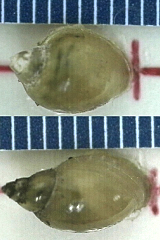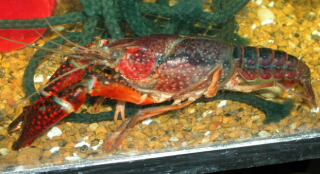 |
Photo: One of the crayfish used to generate the necessary predator chemical sues in the study. |
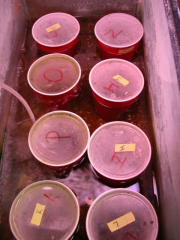 |
Pond snails were collected on campus, paired into separate cups in an aquarium, and allowed to reproduce in lab. Each pair produced several offspring; families were kept separate from each other so that family identity of individual snails could be tracked. |
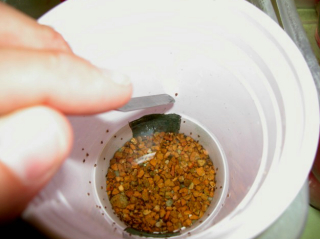 |
Each family consisted of many offspring. At an early stage of development, individual offspring were collected from family cups, and assigned, by family, to grow in iether the presence or absence of predator cues. |
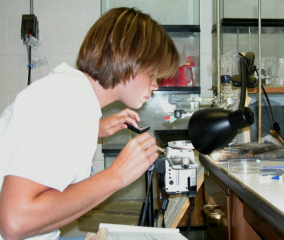 |
All snails were photographed with a digital camera before being assigned to treatments and at the end of the experiment. Differences among families in the difference in mean shell size and shape (aspect ratio) between predator and non-predator treatments indicated the degree of genetic variation among families in phenotypic plasticity. |

